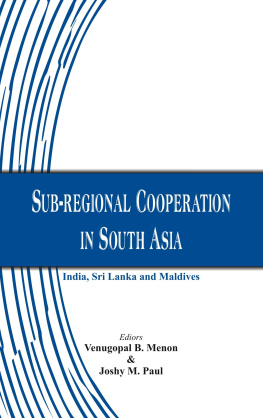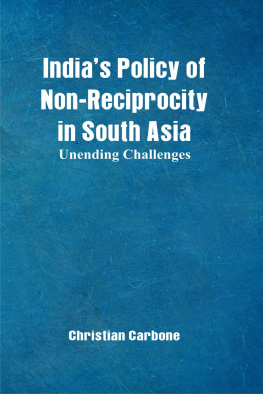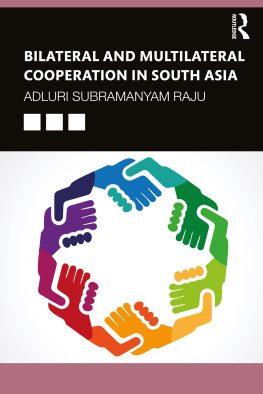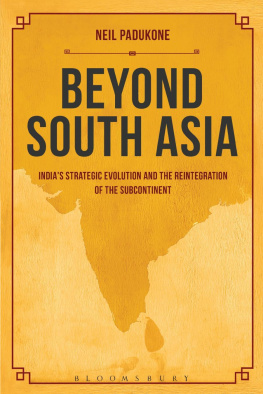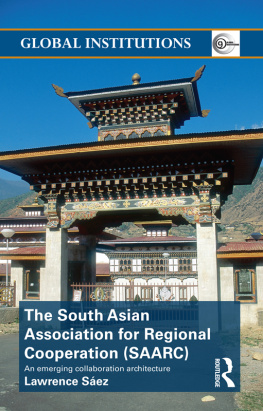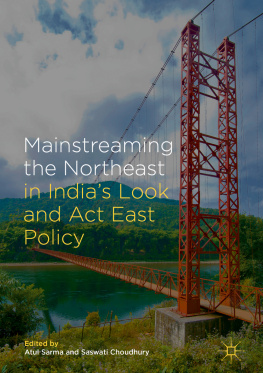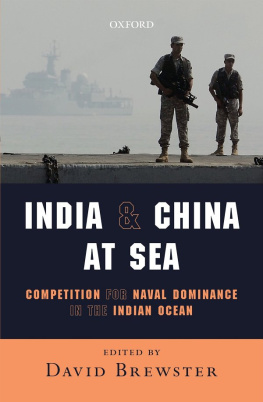Published by
Vij Books India Pvt Ltd
(Publishers, Distributors & Importers)
2/19, Ansari Road
Delhi 110 002
Phones: 91-11-43596460, 91-11-47340674
Fax: 91-11-47340674
e-mail:
web: www.vijbooks.com
Copyright 2017, Christ University, Bengaluru
First Published : 2017
ISBN: 978-93-85563-93-5 (Hardback)
ISBN: 978-93-85563-94-2 (Paperback)
ISBN : 978-93-85563-95-9 (ebook)
All rights reserved.
No part of this book may be reproduced, stored in a retrieval system, transmitted or utilized in any form or by any means, electronic, mechanical, photocopying, recording or otherwise, without the prior permission of the copyright owner. Application for such permission should be addressed to the publisher.
The views expressed in this book are those of the editors/contributors in their personal capacity. These do not have any official endorsement.
South Asia had, over a long period, been depicted as a region of poverty and hunger, nuclear instability, political rivalry between India and Pakistan, and religious extremism. It has launched regional grouping mechanism, called South Asian Association for Regional Cooperation (SAARC), in the 1980s to emulate the success of Southeast Asian region and create the region as a vibrant and cohesive unit. However, the everlasting issue of Kashmir dispute and historical baggage of two nation theory, India and Pakistan have not been able make the relationship normal. This has spoiled the region to implement various initiatives adopted for regional integration process such as South Asian Free Trade Area (SAFTA). In fact, economic integration process contributes political stability but the lacks of strong economic engagement between the member countries hamper the region to become a vibrant regional grouping.
India has initiated earlier to create a sub-regional mechanism in the east for the economic development of the north east. Various ministers and government officials propounded the idea of look east through north east to reap the economic benefit of Indias look east policy for the land locked northeastern region bringing seven northeastern states and the Southeast Asian countries. It also proposed a trans-continental Asian highway linking India, Myanmar, and Thailand through a road system stretching 3,200 kilometers from Moreh in India to Thailands Maesot. However, there is no such proposal for connectivity on the maritime front in the sub-continent, while coordination on the maritime security front is more on piecemeal basis. Although Sri Lanka and Maldives have been included in Asian Development Banks South Asia Subregional Economic Cooperation project along with India, Bangladesh, Bhutan and Nepal in 2014, but the focus is still in land connectivity. The two island nations of Sri Lanka and Maldives and the southern peninsula of India face identical, though not similar, issues from the sea, such as piracy, impact of climate change, and maritime terrorism. Importantly, Chinas maritime expansion towards the Indian Ocean Region (IOR) is posing major security challenge for India. It is imperative for India to consider sub-regional grouping comprising India, Sri Lanka and Maldives for the promotion of Indias national interest as well as regional prosperity.
In this regard, Department of International Studies and History, School of Law, Christ University, Bangalore organized a two day conference on the theme Sub-regional Cooperation in South Asia: India, Sri Lanka and Maldives on August 31-September 1, 2015 at the Christ University Auditorium. The seminar discussed main issues which affect the region such as piracy and other forms of non-traditional security issues, economic issues, political problems, Chinas role in the Indian Ocean and its impact on India, and suggested various mechanisms to improve the interaction between the three nations. The Christ University provided financial and logistical support to conduct the seminar.
We are extremely thankful to the management of the University, especially the Honourable Vice Chancellor, Pro-Vice Chancellor, the Finance Officer, the Registrar, Director and Dean, School of Law, faculties of Department of International Studies and History, and other fraternities of the Christ University. We also express our gratitude to Ms. Sandra Kuriakose and her team in helping organizing the event successfully. We express our gratitude to the students also who presented the papers in the seminar which are unfortunately not included in this book.
Venugopal B. Menon & Joshy M. Paul

